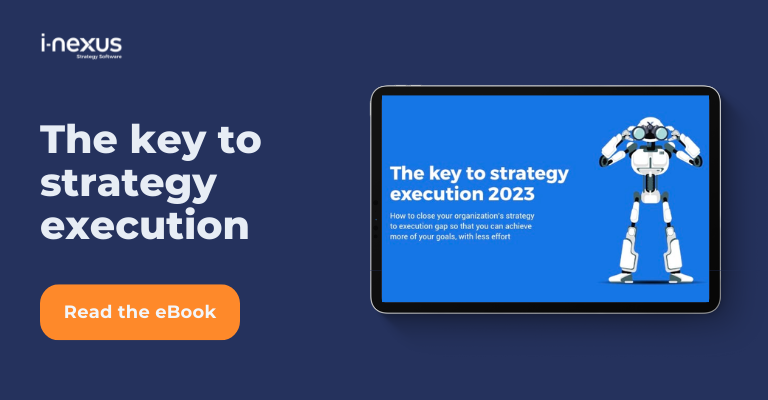Cross-functional collaboration can open the door to increased engagement across your team and a more innovative workplace. But what is cross-functional team collaboration, and what are its benefits?
In today’s business world, many companies recognize that collaboration across departments is the key to achieving business growth.
86% of employees blame a lack of collaboration as the top reason for workplace failures. This could mean relying on isolation, and traditional organizational structures could hold your business back.
Perhaps you want to boost your business’ performance or develop your professional skills.
Whatever your circumstances, cross-functional collaboration can transform your business from a disconnected organizational silo to a cohesive, forward-thinking team.
Read on to explore how cross-functional collaboration works and how it can drive your organization to new heights.
What is cross-functional collaboration?
It’s likely that “collaborate more” has made it onto your business’ objectives list several times, but how do you achieve that?
Cross-functional collaboration is a working approach whereby people from different business areas join forces to solve a problem, achieve a goal, or implement change.
It involves team members sharing their different skills, perspectives, and knowledge regardless of their experience or status within the company.
Cross-functional team collaboration waves goodbye to hierarchical structures, such as managers leading a discussion, and encourages the integration of knowledge and collective decision-making.
The thought of passing work from your department to another may feel unnerving, which is why cross-functional collaboration is so important. It drives continuous improvement across your organization by collecting ideas from everyone regardless of their role or background.
By adopting this approach, you’re likely to see a boost in productivity and improvements to your processes as you get closer to achieving your goals.
The benefits of cross-functional collaboration
We’ve mentioned the importance of cross-functional collaboration for innovative businesses like yours.
Here are just some of the benefits of introducing this concept into your workplace:
Increasing innovation
We’re not doubting the benefits of independent working, especially if you must focus on meeting a deadline.
But if your team is always isolated, this prevents them from sharing their skills and learning from others’ expertise, ultimately leading to a lack of innovation across your business.
Cross-functional collaboration gives every individual a voice.
By bringing teams together, those from different backgrounds can share their perspectives and offer various ideas and solutions.
When team members from different departments collaborate, they share their specialisms, knowledge, and preferred approaches to a situation - which others may never have encountered before.
This can stimulate creativity and encourage learning and development. Merging these different perspectives can offer you a new, innovative approach to a problem or project.
For example, while the finance department is likely to feel clueless about marketing campaigns, they’re likely to know a thing or two about the problems customers face at the checkout.
Knowledge is power, right?
An increased pace of change
The more your team joins forces with other departments, the quicker change will likely be implemented.
When you’re working single-handedly to meet a deadline, it’s easy to feel tight for time. You may struggle to find the time to focus on personal development or new ways of working.
Collaboration saves time, around two hours per week for every employee, which could be used to implement organizational change.
Perhaps you’ve been putting off a task, such as testing new software, as it wasn’t considered a priority compared to other projects.
By involving others with different skills and levels of authority, you can secure buy-in from key stakeholders most quickly and have time to devote to new opportunities.
Everyone will be on the same page, you’ll have more time to commit to change and fewer delays.
Enhanced knowledge
Looking to enhance your employees’ skill sets? Cross-functional collaboration allows your team to learn new skills and knowledge from experts across the business.
Employees can share knowledge they may otherwise keep quiet about, which helps to encourage a continuous learning ethos within your organization.
Improved collaboration
As the name implies, cross-functional collaboration improves collaboration across your business. By collaborating with other teams, your work culture will promote the value of teamwork and togetherness, which can boost morale across the team.
Employees working together cross-functionally can improve communication skills - allowing them to understand each other better, reduce conflict and help information and knowledge to be shared effectively.
What are the challenges involved in cross-functional collaboration?
When done right, cross-functional collaboration can unlock increased innovation and productivity across your business.
But several challenges can threaten the effectiveness of cross-functional collaboration to keep in mind.
Here are some potential challenges to consider so you’re prepared for an obstacle
Communication issues
Cross-functional collaboration may require employees to work with those they haven’t met or know well. This may leave your team feeling out of their comfort zone or nervous about participating in discussions.
To combat these communication barriers, you should create an environment that suits each individual. Be sure to ask your team how they work best - some may prefer to avoid presenting ideas to stakeholders and would rather be involved in ideation.
Knowing how your employees work best and their communication preferences can help them to feel comfortable collaborating with different departments within your organization.
Lack of trust between teams
It’s common for team members to feel reluctant to change in the workplace, particularly if they’ve worked for your organization for a while.
New ways of working may leave them feeling out of their depth, with cross-functional collaboration often changing working habits through new approaches to work being explored.
This reluctance is often due to a lack of trust and unfamiliarity between teams.
Perhaps a team member doesn’t understand another worker’s role and responsibilities or doesn’t feel they would work well with them due to their different backgrounds or experience.
With this in mind, it’s important to introduce cross-functional collaboration slowly and over time.
You could start with different departments working together on a smaller project before jumping into the deep end with a high-priority task that may cause stress and discomfort.
Misaligned goals or priorities
While your team collaborating with other departments can bring valuable insight and expertise, their focus or priorities may differ from yours.
While personal goals are important to career development, if individuals are more focused on goals that benefit them, their priorities may steer away from the goal of the project or task at hand.
If you’re looking for successful cross-functional collaboration, ensuring that each department knows the project’s goal and how you will achieve it is important.
For example, if marketing and HR are collaborating on a project, both teams should have an individual strategy ready to meet the project's goals and objectives.
Making cross-functional collaboration work
We’ve explored the benefits of cross-functional collaboration and the challenges you want to avoid. Ready to get started? Here’s how to introduce cross-functional collaboration successfully into your organization.
Create a collaboration plan
Your collaboration plan will outline the goals of cross-functional collaboration and how it will benefit your business and employees.
You should outline the specific objectives and goals of cross-functional collaboration, key stakeholders involved in specific projects, and the project lead responsible for the collaboration plan.
If creating a plan for a project or strategy feels like hard work, you aren’t alone.
Creating a collaboration plan takes time and commitment, from setting key performance indicators (KPIs) to assigning goals to each task.
You can use i-nexus strategy software to streamline the planning process and remove the complexities of creating a plan.
You can monitor your goals, create meaningful KPIs, and set targets for each team member.
With our strategy software, taking charge of planning has never been easier.
Have the right software
Cross-functional collaboration tools can keep things organized for both you and your employees.
They allow you to keep track of each person’s role and the goals and objectives of each project your team is working on.
After all, with different teams working on one project, keeping on top of everything can overwhelm you.
We like to think we’ve got what it takes to be your go-to software for cross-functional collaboration.
Whatever your role and wherever you sit in your business, our x-matrix, balanced scorecard, and portfolio tools can streamline your cross-functional collaboration plans and breathe new life into them.
Document and standardize your processes
Documenting and standardizing your processes as you introduce cross-functional collaboration can increase efficiency and serve as a record of your efforts.
You should detail your project goals, who is responsible for each task, and demonstrate how you’ll measure success.
These documents should be available to your team and other stakeholders to refer back to when needed.
Using i-nexus’ software can help you document your progress, manage your portfolios and standardize your processes so that you can control everything.
Track, monitor and adapt your processes
Maybe a process you thought would be effective hasn’t met your expectations, or an employee has raised concerns about your new working methods.
Whatever the circumstances, ensuring your processes are adaptable can keep you aligned with your goals.
Tracking your processes can help you identify what’s working well with your cross-functional collaboration and any obstacles that need to be addressed.
With i-nexus’ tracking tools, you’ll be able to easily monitor your processes and identify any roadblocks in your team’s cross-functional collaboration.
You’ll gain invaluable insights into your KPIs, metrics, and reports to get you one step closer to meeting your goals.
Cross-functional collaboration with i-nexus
Cross-functional collaboration is what you need for improved efficiency, communication, and innovation across your organization.
But while collaboration offers several benefits, it can feel challenging to keep track of. Different work approaches and misaligned goals across teams can overwhelm you, which is where i-nexus can help.
Our software cuts the complexity of strategy delivery by having your planning, execution, and goal tracking all in one place. It’s never been easier to achieve your goals.
Take a look at how we can support cross-functional collaboration today.
Learn more about strategy execution
Take the next steps in your journey by exploring our strategy execution resource hub or any of the below:
- Key to strategy execution eBook: Read how companies like Danaher and HP have mastered strategy execution and what you can learn from them.
- What does it mean to be Business Agile?: Leap into the future of strategic planning and execution with this fascinating insight.
- Can ChatGPT create your strategy?: As more and more AI solutions come to market, ChatGPT has taken the lead with its ability to answer seemingly any question - but can ChatGPT help you create your strategy?
About the author
Sam Ancliff is the Demand and Lead Generation Manager at i-nexus, and the Producer of the Strategy Hero podcast.
In his role, his drive is to provide leaders with the tools and insights they need to make next-level decisions in their businesses and organizations.
If you’d like to talk more about strategy, contact Sam at sam.ancliff@i-nexus.com or connect with him on LinkedIn for the latest insights.



.jpg?width=352&name=KPIs%20(3).jpg)